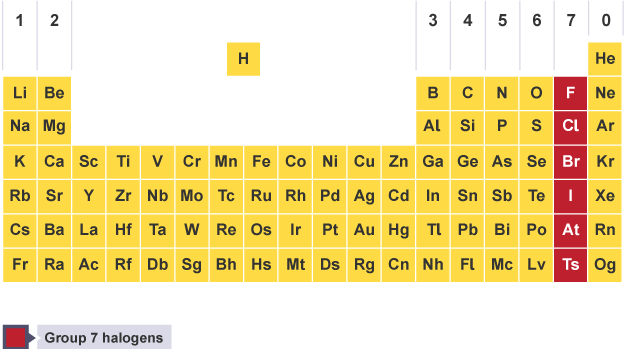Understanding Group 7 Elements

Introduction to Group 7 Elements
Group 7 of the periodic table, also known as the halogens, consists of five non-metal elements: fluorine (F), chlorine (Cl), bromine (Br), iodine (I), and astatine (At). These elements are significant due to their unique properties and reactivity, making them essential in various chemical applications and processes. Given the increasing focus on chemical safety and environmental impact, an understanding of Group 7 elements is crucial for both educational and practical purposes.
Properties of Group 7 Elements
The halogens are characterised by their high electronegativity and reactivity, especially when forming compounds with alkali metals. Fluorine is the most reactive, while iodine is less so. The physical state of these elements varies; fluorine and chlorine are gases at room temperature, bromine is a liquid, and iodine is a solid. Furthermore, all halogens form diatomic molecules (e.g., F2, Cl2), which contribute to their reactivity and interactions with other elements.
Uses of Group 7 Elements
Group 7 elements have diverse applications. Chlorine is widely used in water purification and the production of disinfectants. Bromine is utilised in fire retardants and agricultural chemicals, whereas iodine is essential for human health, particularly in hormone production. Fluorine, owing to its high reactivity, is employed in the manufacturing of fluorides and specialized polymers. Astatine, being rare and radioactive, has limited but interesting potential as a medical treatment for certain types of cancer.
Current Trends in Research and Application
Recent scientific research has sought to expand the understanding of the reactivity and potential applications of halogens. With growing concerns about climate change and pollution, more environmentally friendly methods of synthesising halogen compounds are being explored. Moreover, emerging technologies that leverage the properties of halogens could lead to advancements in fields such as materials science, medicine, and chemical engineering.
Conclusion
The significance of Group 7 elements extends far beyond their basic chemical properties. Their applications in everyday life and industry underscore their importance in scientific research and technology. As we progress towards sustainable practices in chemistry, the role of halogens will continue to be pivotal. An understanding of these elements not only enriches our knowledge of the periodic table but also has implications for health, safety, and innovation in various sectors.
